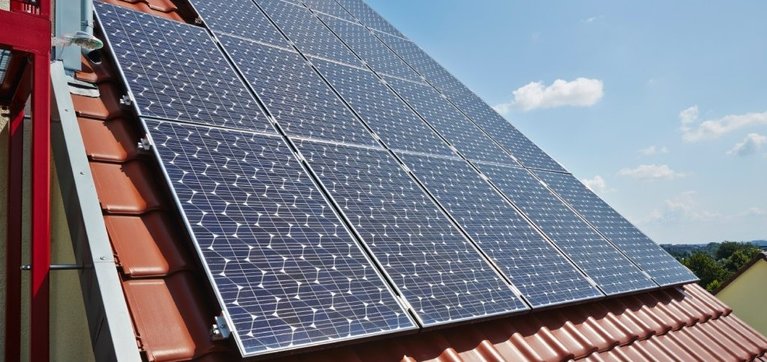Household rooftop solar in India is seeing a gradual improvement after almost stagnant annual growth of 100-200 MW until fiscal year 2020, according to a report from consultant Bridge To India.
The document cites subsidies paid under a Ministry of New and Renewable Energy (MNRE) scheme as the main enabler for residential PV uptake.
The MNRE’s grid-connected rooftop solar program is aiming for residential installation of 4 GW by December next year. Now in its second phase, the scheme offers a 40% subsidy for the first 3 kW of generation capacity in rooftop systems and then a 20% subsidy up to a 10 kW ceiling. The program is being delivered at state level by electricity distribution companies.
The Bridge to India report says the market outlook is also becoming positive due to a steady improvement in consumer awareness, affordability, financial viability, and financing options, as well as the entry of large organized solar installers.
“Free net metering in most states also strengthens [the] investment case for residential rooftop solar,” stated the report. “The average marginal tariff for a household with monthly consumption of 300 kWh in 15 states – accounting for 90% of [typical] residential consumption – is INR7.18/kWh, effectively yielding an investment IRR [internal rate of return] of 8.3% for [a] 3 kW system.”
The study estimates the target market for domestic solar will hit around 52 million households by 2030 – 10% of urban independent households. Bridge to India forecasts residential PV generation capacity will reach 16.2 GW by 2030, under a medium scenario that assumes a 5% annual decline in system cost and a 3% annual fall in grid tariffs. That calculation took into account state-wise, bottom-up analysis of the market in view of prevailing grid tariffs, demographics, the number of independent houses, and the financial viability of residential solar.
Current status
The report estimates India had installed 1,292 MW of residential rooftop PV as of June. That accounted for only 17% of total rooftop solar capacity – which can also include commercial and industrial arrays – and just 2.9% of the nation’s total solar capacity.
Only around 0.4% of independent urban homes – 400,000 – have installed rooftop solar. The major deterrents have been consumer inhibition and low awareness about the technical, financial, and operational aspects of installations, according to Bridge to India.
“Rooftop solar is not deemed as an essential purchase, because of improving … reliability of grid power,” stated the document. “A significant proportion of the urban, affluent population does not, also, have access to rooftop rights, or is unwilling to make a long-term cost commitment. Households attach a very high financial ([because of the potential] ability to expand the building vertically) and/or social value ([using the] space for leisure or games [and] utility needs) to rooftop [space], where available, restricting growth prospects.”
A net capital cost – after the 40% upfront MNRE subsidy for sub-3 kW arrays – is currently estimated as NR 32,000/ kWp, assuming a module cost of INR18.7/Wp. That figure is within the affordability threshold of 67 million urban independent households, according to the consultant. However, added the report, cost increases, arising from more expensive panels; import duties including basic customs duty of 25% on cells and a 40% levy due from April; and a general sales tax set at 5-12%, could potentially dampen the rooftop market.
This copy was amended on 01/12/21 after Bridge to India changed its estimated net capital cost for MNRE-subsidized, sub-3 kW arrays from INR53,000/kWp to INR32,000/kWp.
This content is protected by copyright and may not be reused. If you want to cooperate with us and would like to reuse some of our content, please contact: editors@pv-magazine.com.









Also by 2032 10 Crore Home owners would be installing Solar PV’s